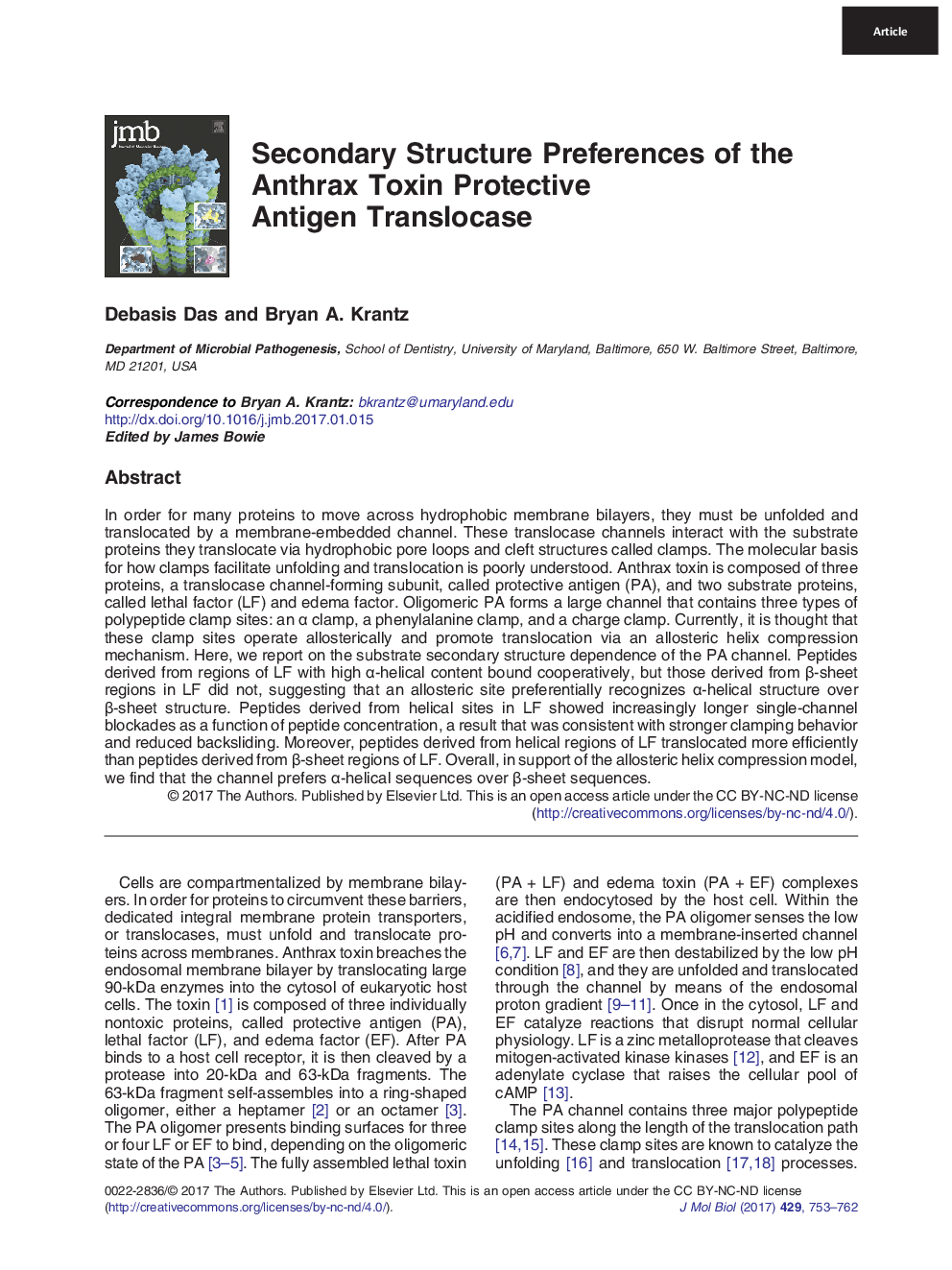| کد مقاله | کد نشریه | سال انتشار | مقاله انگلیسی | نسخه تمام متن |
|---|---|---|---|---|
| 5532945 | 1402089 | 2017 | 10 صفحه PDF | دانلود رایگان |
- Two models of translocation are proposed that depend on substrate secondary structure.
- An allosteric helix compression model for helical peptides
- An extended-chain Brownian ratchet for β-sheet peptides
In order for many proteins to move across hydrophobic membrane bilayers, they must be unfolded and translocated by a membrane-embedded channel. These translocase channels interact with the substrate proteins they translocate via hydrophobic pore loops and cleft structures called clamps. The molecular basis for how clamps facilitate unfolding and translocation is poorly understood. Anthrax toxin is composed of three proteins, a translocase channel-forming subunit, called protective antigen (PA), and two substrate proteins, called lethal factor (LF) and edema factor. Oligomeric PA forms a large channel that contains three types of polypeptide clamp sites: an α clamp, a phenylalanine clamp, and a charge clamp. Currently, it is thought that these clamp sites operate allosterically and promote translocation via an allosteric helix compression mechanism. Here, we report on the substrate secondary structure dependence of the PA channel. Peptides derived from regions of LF with high α-helical content bound cooperatively, but those derived from β-sheet regions in LF did not, suggesting that an allosteric site preferentially recognizes α-helical structure over β-sheet structure. Peptides derived from helical sites in LF showed increasingly longer single-channel blockades as a function of peptide concentration, a result that was consistent with stronger clamping behavior and reduced backsliding. Moreover, peptides derived from helical regions of LF translocated more efficiently than peptides derived from β-sheet regions of LF. Overall, in support of the allosteric helix compression model, we find that the channel prefers α-helical sequences over β-sheet sequences.
Graphical Abstract202
Journal: Journal of Molecular Biology - Volume 429, Issue 5, 10 March 2017, Pages 753-762
